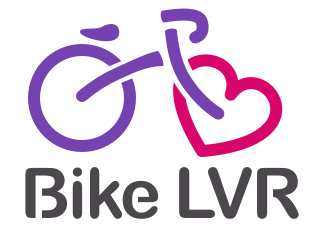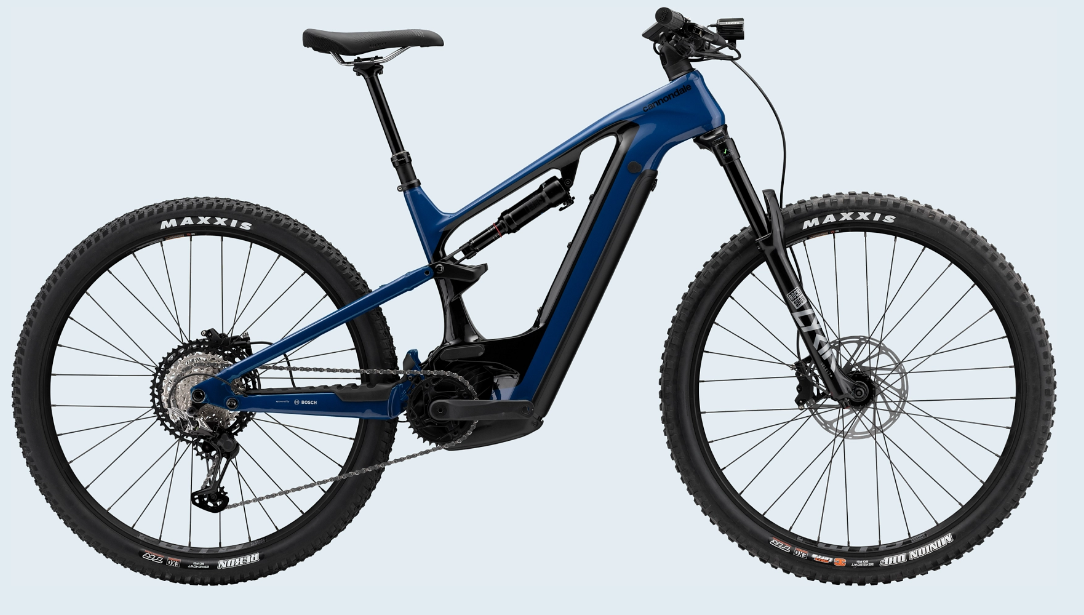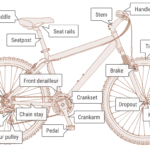Cyclists have a wealth of choices when it comes to bike brake types. Each brake has its unique features and benefits, making them suitable for different riding conditions and preferences. Let’s delve into the world of bike brakes to examine the various systems that allow riders to remain in control while riding.
Table of Contents:
- Disc Brakes
- Caliper Rim Brakes
- Drum & Coaster Brake Systems
- Hydraulic Rim Brakes
- FAQs in Relation to Disc vs Rim Brakes
Disc Brakes
Disc brakes are a popular choice for modern bikes, providing efficient stopping power and better performance in wet conditions. They feature brake pads that act on a rotor attached to the wheel’s hub, which can get quite hot during use. Hydraulic disc brakes offer superior braking efficiency as they have no friction in the hose, ensuring all your effort is transmitted directly to the brake. They are common on heavier ebikes that need the added sopping power.

Rotor Attachment and Heat Management
The rotor of a disc brake system is securely fastened to the wheel’s hub using bolts or quick-release mechanisms. The rotor material must be able to withstand high temperatures generated by friction between it and the brake pads during operation. Heat dissipation features such as venting holes or slots help manage this heat buildup, maintaining optimal braking performance.
Advantages of Hydraulic Disc Brakes 🚵♀️
- Better Modulation: Hydraulic systems provide smoother control over braking force compared to mechanical cable-operated counterparts.
- Maintenance: With fewer moving parts and self-adjusting pad wear compensation, hydraulic disc brakes require less frequent maintenance than their mechanical counterparts.
- All-Weather Performance: Unlike rim-based caliper systems that lose effectiveness when rims become wet or dirty, disc brakes maintain consistent stopping power regardless of weather conditions thanks to their enclosed design.
Disc brakes are a reliable and efficient braking system that can provide great stopping power in all conditions. Moving on, caliper rim brakes offer the same performance but with different designs to suit specific bike frames.
Caliper Rim Brakes
Caliper rim brakes are a common choice for road bikes, offering reliable stopping power and easy maintenance. These brake systems come in two main types: single-pivot and dual-pivot calipers.
Single vs Dual Pivot Design Comparison
Single-pivot calipers have been supplanted by the dual-pivot variety, which offer superior performance. The primary difference between these designs lies in how they apply force to the wheel’s rim. Single pivot brakes utilize one central point of rotation, while dual pivot brakes feature two separate points of rotation that provide increased braking power and modulation.
Direct-Mount Integration with Bike Frames
In addition to traditional mounting methods, high-end rim brake road bikes often employ direct-mount or dual-pivot caliper brakes integrated into the frame via posts. This design not only enhances aesthetics but also improves performance by reducing flex during hard braking efforts. Some examples of bicycles featuring this technology include models from brands like Trek Bikes, Specialized, and Cannondale.
Caliper rim brakes offer reliable stopping power and are an ideal choice for many bike frames, making them a popular option among cyclists. V-brakes provide another great braking system that is widely used in today’s bikes due to its adjustable cable pull ratio.
V-Brakes (Linear Pull Brakes)
V-brakes, commonly referred to as linear pull brakes, provide a cost-effective solution for powerful stopping power and are favored by touring cyclists, hybrid riders, tandems and some mountain bikers due to their low maintenance needs and reliable performance. These brakes are popular choices for touring bicycles, hybrids, tandems, and some mountain bikes due to their ease of maintenance and consistent performance.
Cable Pull Ratio Differences Explained
One key difference between V-brakes and other types of caliper systems is the cable pull ratio. While center-pull or dual-pivot calipers use a 1:1 cable pull ratio, V-brakes utilize a 2:1 ratio. This means that for every millimeter of cable pulled by the brake lever, the brake pads move two millimeters towards the rim. The result is increased mechanical advantage and improved braking efficiency compared to traditional caliper designs.
Popular Applications of V-Brake Technology
- Touring Bikes: Due to their reliability and easy maintenance, V-brakes are often found on touring bikes designed for long-distance cycling adventures.
- Hybrid Bikes: As hybrid bikes combine elements from both road and mountain biking disciplines, V-brake technology provides an ideal balance between performance and affordability in this category.
- Tandem Bikes: Tandem bicycles require additional stopping power due to their increased weight; hence they frequently employ robust V-brake systems for enhanced safety during rides with multiple riders aboard.
For an economical and dependable braking system, V-brakes offer a great solution. Their unique cable pull ratio offers improved braking efficiency while being easy to maintain, making them perfect for various bicycle types.
V-brakes (Linear Pull Brakes) offer an efficient and reliable braking system, making them a popular choice among bike riders. Moving on to the next topic of discussion, we will explore drum & coaster brake systems and how they work in different applications.
Drum & Coaster Brake Systems
Drum brake systems work internally within hubs, offering low maintenance requirements but limited stopping force compared to other options available today like disc or rim-based alternatives. One example includes coaster-style rear-wheel-only setups where locking up becomes relatively simple yet effective when needed most. My favorite beach cruiser had a Drum break and you could make the best skids with it😁
Internal Workings of Drum Brake Mechanisms
The drum brake mechanism consists of an enclosed assembly inside the hub, featuring a pair of shoes that expand outward against the inner surface of the drum when braking force is applied. This friction slows down and eventually stops the wheel from spinning. Due to their internal design, drum brakes are less susceptible to dirt and water contamination, making them ideal for bicycles ridden in harsh weather conditions or on muddy trails.
Coaster-Style Rear-Wheel Application
Coaster brakes, also known as backpedal or foot-operated brakes, function similarly to drum brakes but are specifically designed for use on the rear wheel only. To engage this type of brake system, riders simply need to pedal backward slightly while maintaining pressure on both pedals. This action causes an internal clutch mechanism within the hub shell itself. The simplicity behind coaster brakes makes them popular among casual cyclists who prefer easy-to-use bike components without sacrificing reliability during everyday rides around town.
Drum & Coaster Brake Systems are a great choice for those who want reliable and easy to maintain braking systems. Hydraulic Rim Brakes offer more precise control, but require greater maintenance due to their fluid-based operation.
Hydraulic Rim Brakes
Although less common, hydraulic rim brakes are a viable option for certain bicycle types. They offer similar advantages to hydraulic disc brakes in terms of modulation and power. These systems utilize fluid pressure instead of cables to actuate the brake pads against the rim, providing consistent performance even under varying conditions.
Fluid Pressure Operation Explained
In hydraulic rim brake systems, pressurized fluid is used to transmit force from the brake lever to the caliper. When you squeeze the lever, it pushes a piston inside a master cylinder that forces hydraulic fluid through sealed hoses into slave cylinders at each caliper. This action causes another set of pistons within those cylinders to move outward and apply pressure on both sides of your bike’s wheel rims via specialized brake pads. The result is smooth and powerful braking with minimal effort required by riders compared with traditional cable-actuated setups.
Suitable Applications for Hydraulic Rim Brake Technology
- Touring bikes: Due to their low maintenance requirements and reliable stopping power, hydraulic rim brakes can be an excellent choice for long-distance touring bicycles where consistent performance over extended periods is crucial.
- Cyclocross bikes: With better mud clearance than disc brakes while still offering comparable levels of control during wet or muddy races, some cyclocross racers may prefer using these systems as well. CyclingTips discusses this topic further here.
- Classic road bikes: For those who want to maintain a traditional aesthetic on their vintage or classic road machines without sacrificing performance, hydraulic rim brakes can be an ideal solution.
FAQs on Disc vs Rim Brakes:
What Type of Bike Brakes are Best?
The best type of bike brakes depends on your riding style, terrain, and personal preference. Disc brakes offer superior stopping power in various conditions, making them ideal for mountain biking and wet weather commuting. Caliper rim brakes are lightweight and suitable for road cycling. V-brakes provide a balance between performance and affordability, while drum and coaster brake systems work well for casual riders.
How Do I Choose Bike Brakes?
To choose the right bike brakes, consider factors such as your riding style (road cycling, mountain biking), the terrain you’ll be encountering (flat or hilly), your budget, and maintenance requirements. Research different brake types like disc brakes, caliper rim brakes, V-brakes (linear pull), drum and coaster brake systems, or hydraulic rim brakes to determine which suits your needs best.
What are the pros of disc brakes?
Pros of disc brakes include very powerful braking, good performance in adverse weather and conditions, higher efficiency than other brake types, and long-lasting brake pads.
What are the cons of disc brakes?
Cons of disc brakes include being heavier than other types of brakes, being more expensive to purchase, being more technical to maintain, and reducing aerodynamic performance.
What are disc brake rotors, and what sizes do they come in?
Disc brake rotors are the part of disc brakes found on the bike’s wheels. They come in various sizes, ranging from 140 mm to 205 mm.






